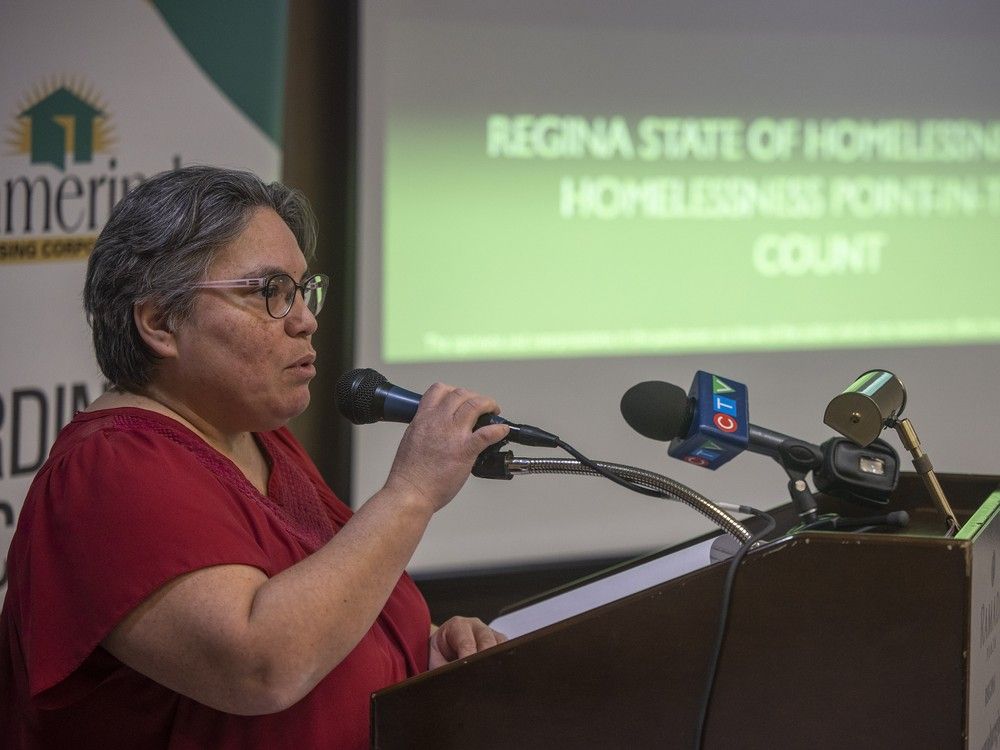
Amid a growing crisis across the country, Saskatchewan’s two major cities plan to conduct homeless counts every year starting this fall.
Volunteers are expected to be out in Saskatoon and Regina this month to co-ordinate the latest point-in-time (PiT) count, which had previously taken place at least once every three years.
The tally offers a snapshot of each city’s homelessness rate and demographics on a single night. Data is collected by speaking to people about their experiences with being unhoused or staying in emergency shelters.
Regina’s PiT count is organized by Namerind Housing Corporation, a non-profit Indigenous group that promotes affordable housing and has partnered with the City of Regina to address its homelessness dilemma.
According to Namerind, all participating cities across Canada will be switching to annual PiT counts at the direction of Reaching Home — a federal program launched in 2019 to co-ordinate a national strategy by compiling data from local partners.
This year, volunteers will conduct what Namerind CEO Robert Byers described as an “enumeration count” — a tally with a less extensive list of survey questions than the full count done in 2024.

While moving to annual counts, Byers says it feels like the growing issue of homelessness is being taken more seriously as rates continue to rise.
Saskatoon and Regina both recorded significant spikes in unhoused people through their past two PiT counts. Regina’s numbers nearly doubled , going from at least 488 in 2021 to 824 in 2024, while Saskatoon almost tripled its tally from 550 in 2022 to 1,499 last year.
“It is important to keep our finger on the pulse,” said Lisa Workman, manager at Namerind. “One of the goals of Reaching Home is to reduce homelessness by 50 per cent, but we know that’s not happening because of the lack of accessible, affordable housing and other systemic issues.”
Related
Byers said while the PiT’s main purpose is to collect data that guides where to address systemic gaps, it’s also an important tool to talk directly with people and ensure they know where to go for supports.
“It becomes a conversation,” Byers said. “It gives us an opportunity to connect with people, and we really believe at Namerind that it’s through connection that we can affect the direction of people’s lives.”
According to Workman, more people tend to get in touch with Coordinated Access Regina — Namerind’s hub to connect people with supports — after they talk with volunteers during a point-in-time count.

Namerind placed 426 people in housing last year, she said, which amounts to about half of Regina’s last PiT count.
However, the actual homelessness figure may have been even higher than 824.
“The PiT count numbers just are showing what we’re seeing on the street,” noted Workman, who expects this year’s stats to rise but not as dramatically as Regina’s increase from 2021 to 2024.
Data from 2025 will be tallied and provided later this year, added Byers.
The Regina Leader-Post has created an Afternoon Headlines newsletter that can be delivered daily to your inbox so you are up to date with the most vital news of the day. Click here to subscribe.
With some online platforms blocking access to the journalism upon which you depend, our website is your destination for up-to-the-minute news, so make sure to bookmark leaderpost.com and sign up for our newsletters so we can keep you informed. Click here to subscribe.